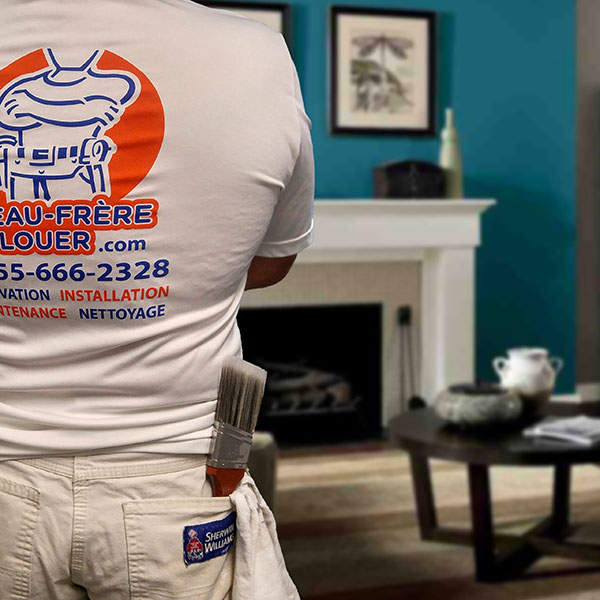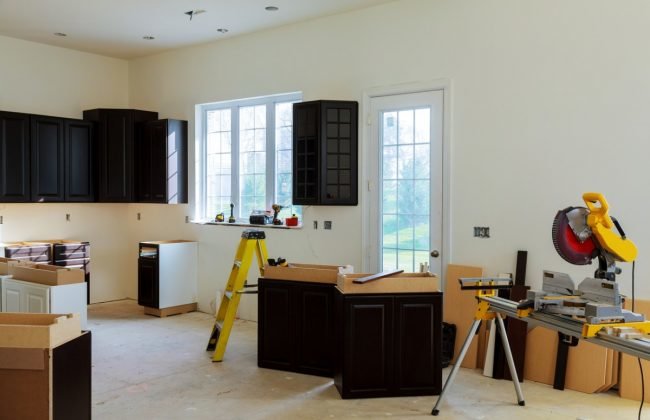Have you ever had a water leak? A broken water heater that causes a flood in the basement, a dishwasher that has leaked from the apartment above or even finding your feet in puddles saying to yourself: "Shit, I have to hurry" and finally, in the crush, you find the source…: “It’s the cursed washer!” It's really not a fun experience.
So you start figuring out how to successfully stop the flow and what to do next to minimize the damage quickly without having to bust your little piggy to solve the crisis.
Article Quick Links
We repair quickly, well and without dust
How can you stop the water leak?
Top 5 plumbing problems that cause water damage and their solutions.
Water damage is a common problem that can be caused by a variety of things, but one of the most common sources is plumbing problems that cause flooding and significant damage to many homeowners in need.
Whether you're a homeowner, co-owner or tenant, a water loss, whether it's a split pipe, an overflowing sink or a clogged toilet, can quickly lead to a lot of water damage to walls. like ceilings.

Read the article dedicated to prevention: The best tips and accessories to prevent water damage at home.
5 common problems and how to stop the source:
1. A burst hot water pipe or tank.
A faulty hot water pipe or tank is one of the most common causes of water damage. It can be a pipe that has frozen, a pipe pierced by a screw or simply a weld that has dropped.
When a pipe bursts, it can send gallons of water through your home in minutes. If you see water squirting out of a pipe, shut off the water at the main valve as quickly as possible.
Solutions
- Fix it yourself: If the leak is small, you may be able to fix it yourself with a pipe repair kit. There are now solderless connectors that are very easy to install: It involves cutting the pipe at the drilled point and reconnecting the sections using the connector, pushing each section of the pipe well. Open the water valve again and check to see if your new connection is tight.
- Call a professional (IPlomberie.ca) : If the leak is large or you are not confident in your repair skills, call a professional to fix the problem. A plumber will be able to quickly stop the leak and make the necessary repairs.
2. A leaky faucet or fixture
A leaky faucet may seem like a trivial matter, but if left unchecked, it can lead to serious water damage over time. First check whether the device has a shut-off valve. If so, turn off the water at the valve and check to see if it's just tightening the connections.
The problem persists? IF you're feeling skilled enough, there are once again shut-off valves that don't require soldering available at hardware stores. If not, your plumber will be able to help you.
No shut-off valve?
In the oldest constructions, it is possible that there is none. If this is your case, the solution will be to close the main water supply and call a plumber for the repair. Take advantage of your plumber to ask him to install shut-off valves for all appliances that do not have them.
3. A clogged sink or drain.
A clogged sink or drain can cause water to back up and overflow, resulting in water damage. To unclog a clog, try using a plunger or plumber's snake. If you can't unclog the clog, call a plumber.
4. An overflowing toilet.
An overflowing toilet is another common cause of water damage. If the toilet overflows, turn off the water at the valve behind the toilet, then use a trap or plumber's snake to locate the blockage. Finally, once the clog is removed, you will need to flush the toilet several times to make sure everything is flowing properly again.
5. A leaky washing machine hose
A leaky washing machine hose is another common cause of water damage, especially in homes with front-loading washing machines. If your washing machine hose is broken, turn off the water at the valve behind the washing machine, unscrew the hoses and replace the sealing washers.
The Brother-in-law Club
Maintenance - Renovation - Maintenance plan

Join for free*
- Free Subscription
- Save $10/hour on handyman service*
- Priority on Requests
- Free annual preventive inspection
*With prepayment of $65/month of service, applicable on all our banners
What to do once the situation is under control?
Remove excess water.
Use a mop or towels to absorb as much water as possible.
If the damage is more extensive, you may need to use a wet and dry vacuum cleaner to remove the water more effectively.
Secure your furniture
Make sure you do this safely, without damaging electrical devices. If the area is carpeted, remove it. Remove any soaked furniture or objects from the area.
Finally, promote good ventilation in the room and inside the walls and ceilings affected by water.
Make one or more openings in the affected walls and ceilings and install as many fans as possible in the room to ensure air circulation and the fastest drying possible. By going about erasing you will greatly reduce the risk of mold appearing.
5 steps to follow once the situation is under control:
From insurance claims to water damage repairs
After water damage, it is crucial to follow the right steps to ensure that the problem does not persist and that your home is restored to its original state. Here are the five essential steps to follow:
1. File an insurance claim
Do's and don'ts before contacting your insurance company:
Once the water damage has been repaired, you will want to file a claim for your home insurance. This will help cover restoration and cleaning costs. You should contact your insurance company as soon as possible and open a claim file.
It is important to take photos and videos of the damage of all affected areas, as well as any damaged property. This will help your insurance company assess the damage for compensation.
It is also important to confirm with your insurer that you can start the work before starting.
Ask for an estimate for the repair of water damage
Then you will want request an estimate for the repair of water damage. This will help you know how much money you need to cover the costs. In any case, your insurer will surely ask you to provide an estimate of the contractor you have chosen.
Advice for choosing the right contractor to repair water damage?
When you are looking a contractor to repair water damage, it's important to make sure you choose the right one. Here are a few tips :
1. Make sure the contractor is licensed and properly insured.
When you hire a contractor, you are stealing ensure they have a license and insurance. This is even more important if you are in condominiums, because the syndicate could be held responsible for your choice. So when you hire a contractor, be sure to ask for their RBQ license and liability insurance. Otherwise, you may have big problems.
2. Check references and reviews
It is important to do your homework. Google and your friends can be your best sources in this process. Checking a contractor's references and reviews can give you a good idea of their work, timeliness, and overall professionalism.
3. Ask about the contractor's experience with water damage repairs
There are a few questions you need to ask first. How long have they been in business? What is their experience with water damage? What is their water damage repair process? And most importantly, do they offer a satisfaction guarantee?
3. Repair water damage
After getting the estimate from your contractor and the go-ahead from your insurance company, you can then begin restoring the room.
The important steps to observe for the repair of a ceiling and / or a wall that has been damaged by water
Complete drying of the area
First, you'll want to make sure the affected area is completely dried out. If there is insulation wool affected by water, you should definitely remove it. It can retain moisture and mold could lodge. In addition, wool that has absorbed water loses its insulating power. This can cause condensation and again mold.
Eliminate and prevent the appearance of mold.
You will want to have a fungicide applied to the affected area. The fungicide eliminates traces of mold and makes the treated surface more resistant to its possible appearance.
Repair of wall and ceiling openings
Once precautions are taken for the mold, you can begin repairing the affected surfaces.
First, it is often necessary to make corrections and enlarge the openings to facilitate the replacement of the gypsum. Always keep in mind that it is easier to repair a larger opening than to repair several small ones. Also keep in mind that materials are always less expensive than worker time. The easier its task will be, the less it will cost you in the end for repairs.
Replacement of wool and steam
If there were any, it is essential to replace the wool and the steamer according to the standards.
Apply joint cement
This is an important step to ensure that the damage is quickly forgotten. It is important to make sure that the contractor is truly qualified to pull joints. A good pointer can correct a bad repair, but no painter or paint can correct a poorly done plastering job.
It is also important to make sure that the plasterer knows how to work with quick-drying joint cements so as not to unnecessarily stretch the time of repairs and increase the number of visits.
Dust-free sanding
Most importantly, MAKE SURE the jointer is working with the correct sanding tools to make dust-free sanding. The last thing you want is to spend days collecting dust in every corner of the house.
Finally, you will want to repaint the ceiling or the wall
After repairing the surface, the next step is to paint it. But before you start, there are some things to know.
Choose the right type of paint
First, choose the right type of paint. Replaced sections require the use of a primer. Then a quality latex paint is used for color. For the bathroom, choose a paint that is more resistant to humidity.
Remember that for a beautiful result, it helps to use the right finish for the right place. So, an Ultra-Matt paint for the ceilings, velvet for the walls and eggshell for the woodwork.
How do I find my existing color?
If you want to keep the labor and painting costs down, you can choose to just paint the affected areas. To achieve this, you can take a sample of paint from your wall (ideally a size of 25 cents) and have a “Match color” done for free at your home improvement center.
In order to ensure the best result, it is preferable to paint a complete wall rather than a section of the wall. If there is a slight difference in color or finish, applying the paint corner to corner will make this difference very subtle.
Conclusion:
Whether you are an owner, co-owner or tenant, when water damage occurs, it is important to take the necessary precautions and act quickly to minimize the long-term damage that can be harmful to your health.
By making sure you follow up with your insurance, selecting the right contractor, and following these simple tips on what to do during and after a plumbing incident, you can help keep your home or condo in good shape. condition and keep you healthy.
If you don't feel comfortable handling repairs on your own, never fear! The brother-in-law for rent is there to help you and provide an answer to your problem.
You can easily make an appointment online to discuss your situation and schedule a visit with our expert in your area. Your brother-in-law for hire will take charge of the situation.
We hope that this article, which is intended as a guide, has been useful to you and we wish you good luck following the emergency.
Brother-in-law for rent, you know?
It's not just us, but Brother-in-law for rent is one of your choices to consider if you want to hire a water damage repair company.
In business since 2009, we have brothers-in-law in several locations in the greater Montreal area and the suburbs and we offer the best services and the best guarantee for your work.
We have an expert in your area:
North Shore of Montreal, Laval, Montreal, Lanaudière, South Shore of Montreal, we are adding painter brothers-in-law regularly and soon everywhere in Quebec.
Our customers can count on our customer service to discuss their project and request a quote. You can also book a telephone appointment directly online at a time that suits you best.
2293 Ile-des-Lys, Terrebonne, Quebec J6Y 6A2.
Website: https://beau-frerealouer.com/
Phone: 514-666-2328
Email: info@beau-frerealouer.com
Do you know IPlomberie.ca?
24/7 emergency service
Our team is ready to respond to your emergencies 24 hours a day, 7 days a week.
With many years of experience in the maintenance, repair or installation of water heaters, our technicians offer you impeccable service.
Plumbing is our business! Whether for small or large projects, our team is here to help you!
Thanks for reading! If you have any further questions about finding and hiring a painting contractor or other renovation specialist, feel free to call us or book an appointment online. We will be happy to help you.












